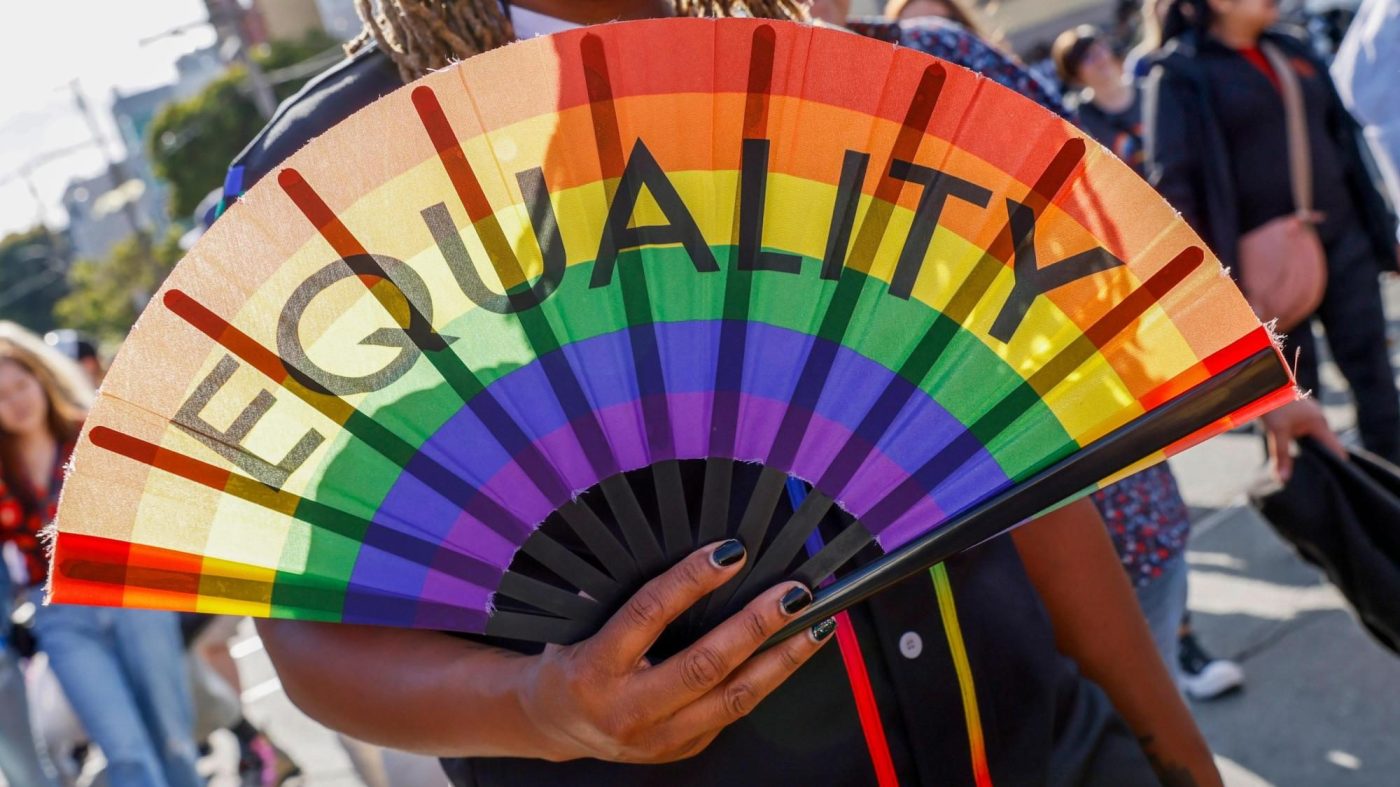
Raihala: As Pride month comes to a close, a reminder that change is possible, even if it’s slow
I’ll never forget June 26, 2015, the day the Supreme Court effectively legalized gay marriage in the United States.
What made it so memorable for me was my utter disbelief that it actually happened. Yes, I was thrilled when Minnesota became the 15th state to do so two years earlier, and I watched in delight as other states began to fall like dominoes in 2014. Oregon, Colorado, sure, no surprise there. But Florida? Oklahoma? Utah, and I repeat, Utah?
At the same time, I couldn’t help but remain pessimistic. I’m a Gen Xer who grew up watching HIV/AIDS kill a large swath of gay men, including Rock Hudson, Freddie Mercury, Robert Mapplethorpe, Anthony Perkins, Robert Reed, Sylvester and Rudolf Nureyev, among many, many others. Randy Shilts, author of the book “And the Band Played On: Politics, People and the AIDS Epidemic” died on the one-year anniversary of the day I came out of the closet.
Despite the fact that even after it became common knowledge it was not a disease that only infected gay men, a large percentage of the population dismissed that and flatly said that gay men deserved it. Gay men deserved to die, that was the message I grew up with.
Beyond the specter of HIV/AIDS, being openly queer in the ’80s and ’90s was no easy task, even if conditions were better than they were for the prior generation. Coming out could mean losing your family, your friends, your job and even in some places your freedom.
In the ’90s, a steady wave of celebrities, mostly women, started coming out publicly. Out magazine debuted in 1992, ushering in a new era when gay publications didn’t need to rely on sexually explicit advertising to survive. And as its title suggested, you could get it delivered to your home like any other magazine, out in the open and not hidden behind a plain brown envelope. The military’s “don’t ask, don’t tell” policy that started in 1994 was actually seen as a positive for queer people who wanted to serve, as long as they kept silent while doing it.
But change came in fits and starts and didn’t always march forward in a straight line. Just as it seemed the public was getting more accepting of queer people, lawmakers and voters would step in to say not so fast, you homosexuals. The majority of people in this country simply allowing gay people to live openly without hassle seemed like something that was forever out of reach. The notion of legalizing gay marriage was something I honestly did not expect to see in my lifetime.
So when the decision in 2015 rolled around, it really did shock me. I was even more surprised when it turned out the political machine was ready to accept gay marriage, largely because polling showed most millennials didn’t really care. A new generation of voters had arrived that wasn’t willing to dismiss people merely for their sexual orientation.
I’ve been out of the closet for my entire adult life, yet it still took time for me to adjust what appeared to be the new normal. Queer representation in entertainment and media became not just acceptable, but expected. And this wasn’t just something happening in the United States, but around the world. Gay marriage is now legal in 37 countries, representing about 20 percent of the world’s population.
Of course, it was inevitable there would be pushback, and there’s been plenty of it. The same forces that demonized gay men as disease-ridden threats to society in my youth have now shifted their focus toward the trans community, a group of people who have long been at the bottom of the pecking order, in both the straight and queer worlds.
In recent years, as trans people have become more open and more visible, there’s been a rise in hateful rhetoric fueled by people who seem to think kids are being forced into surgery and transition, whether or not they want to or not. “I don’t have a problem with gay people, I’m just trying to save the kids,” has become a popular refrain. But it’s based on misinformation and the idea that gender-affirming surgery is somehow mandatory or even commonplace. While there are certainly guidelines for transitioning, there’s no one-size-fits-all rulebook for what is a ultimately a unique journey for every person who does transition. Fear and hatred of trans people doesn’t make any sense.
Pride month comes to an end this weekend. Seeing queer people openly bashed nearly a decade after same-sex marriage was legalized is a reminder that, as I said, change comes in fits and starts. But I also like to remind myself that I’m willing and open to be surprised at how queer people of all stripes are increasingly not just accepted but welcomed.
Related Articles
Other voices: As America sank into the couch, Joe Biden and Donald Trump combined for a depressing farce. Enough
Stephen L. Carter: If Trump wins, liberals might regret this social media ruling
How should universities teach the Palestinian-Israeli conflict?
Nolan Finley: Biden lost more than the debate to a predictable Trump
Thomas Friedman: Joe Biden is a good man and good president. He must bow out of the race.

